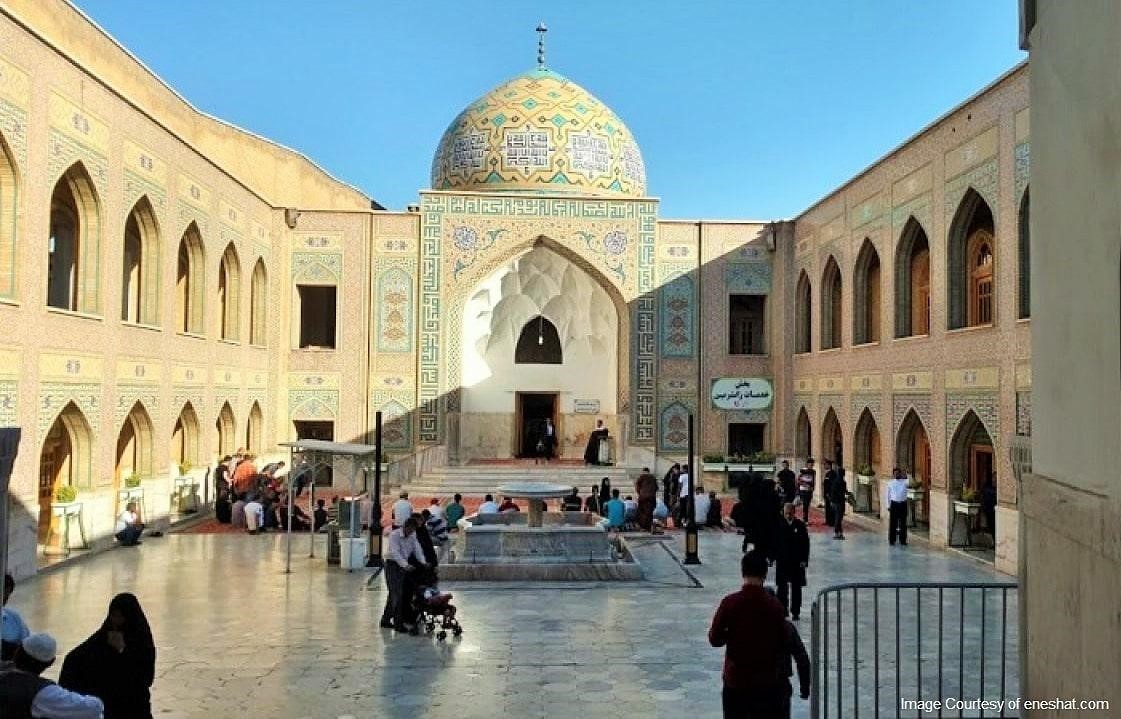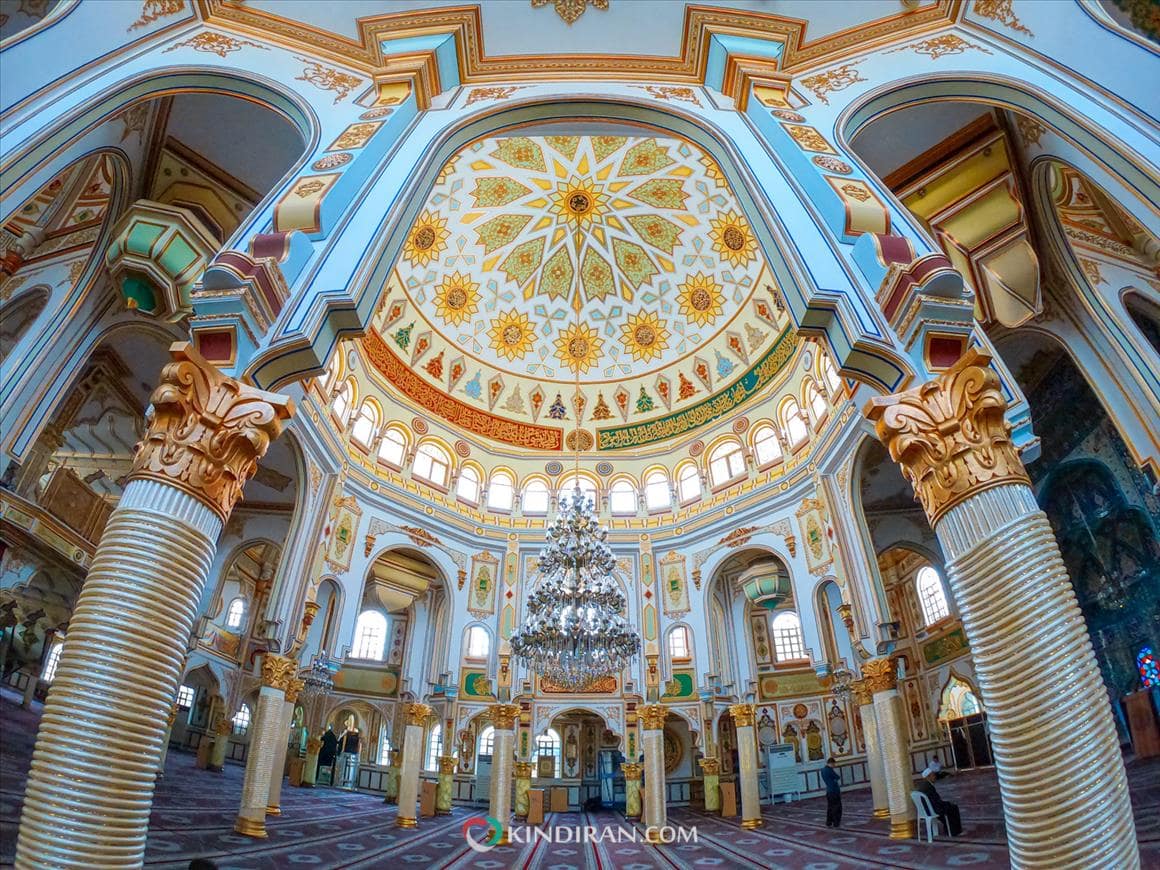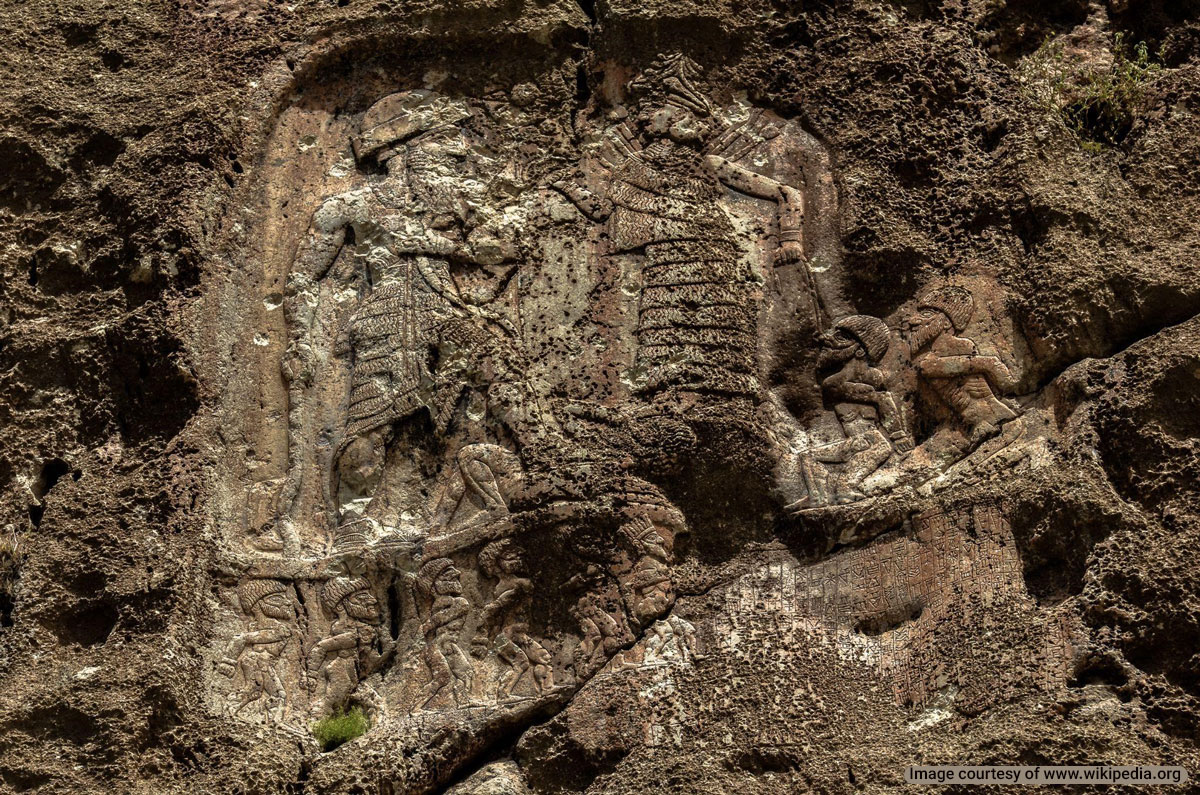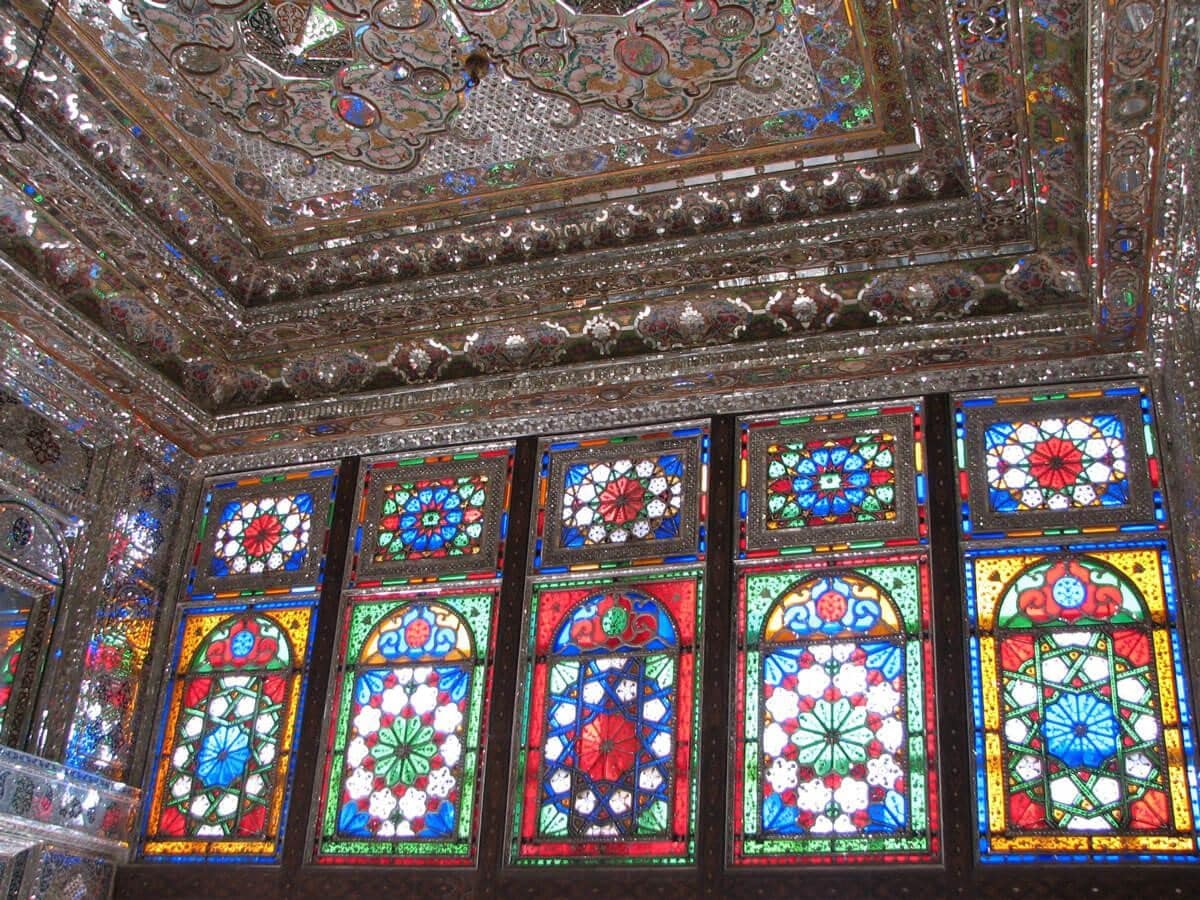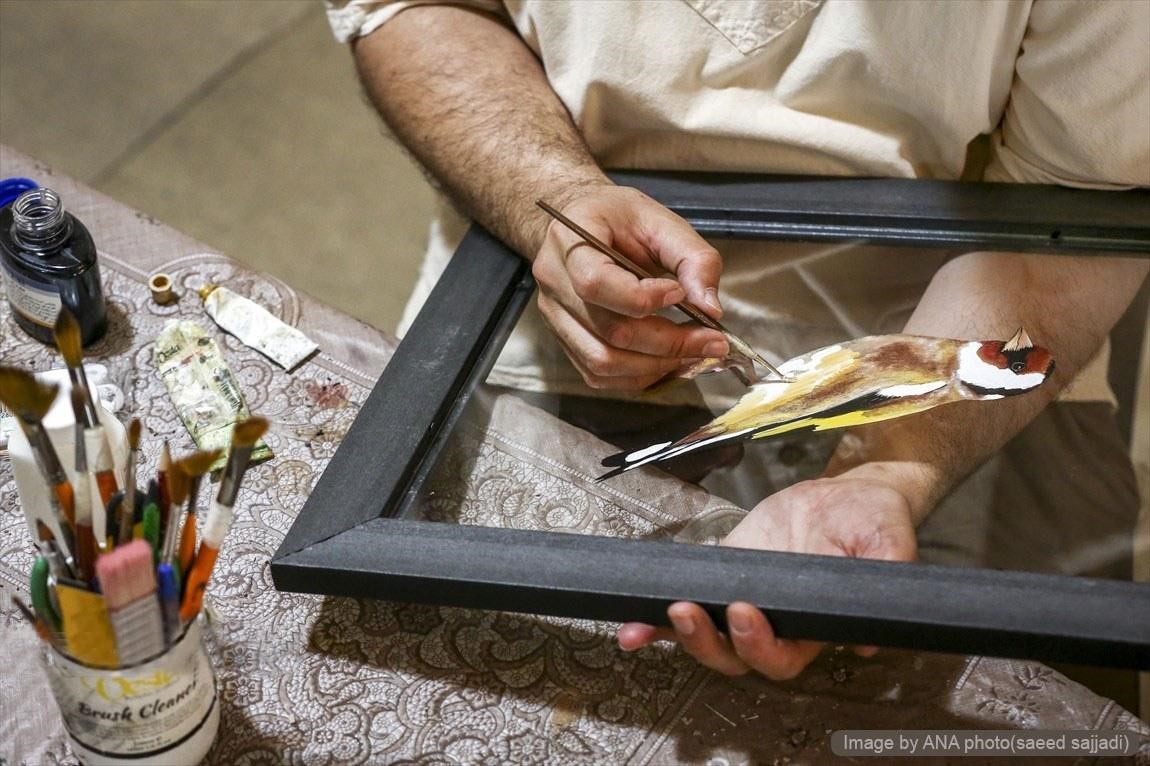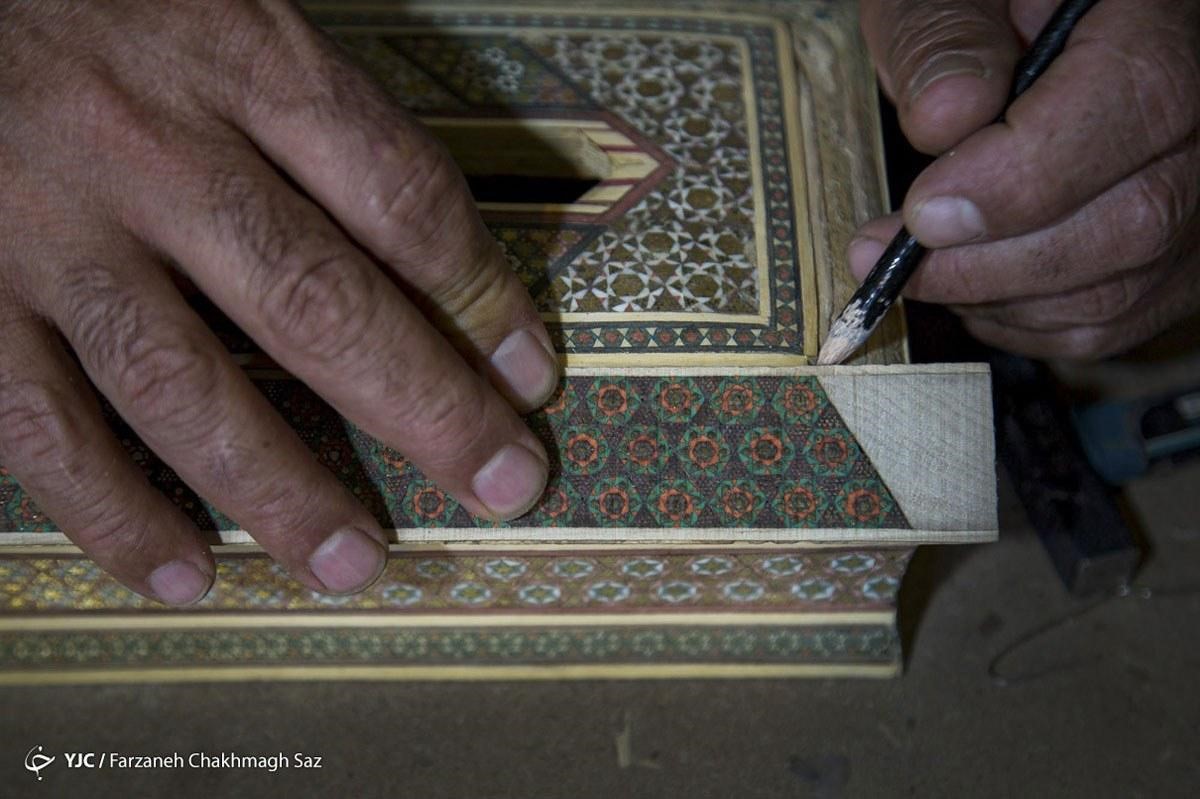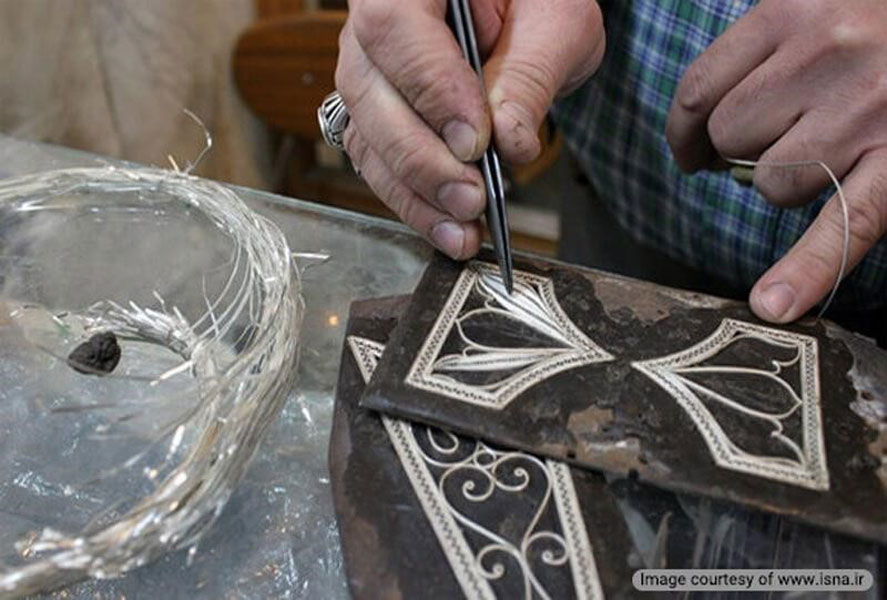
Filigree work in Iran is one of the sub-branches of traditional metalwork, among Iranian handicrafts, that leads to the creation of beautiful decorative dishes using thin silver wires. Of course, the metal used in this traditional metalwork practice is not limited to silver and other metals such as copper and gold are used to create filigree handicrafts.
The cities of Zanjan, Ardabil and Isfahan are among the cities where this handicraft style is practiced to craft decorative dishes. This handicraft art is very different from Sermeh embroidery, which is an ancient style of embroidery that decorates clothing using gold and silver threads.
What is Filigree Work?
The art of filigree work in Iran is considered one of the most delicate fields of traditional metalwork that has been practiced in our country for a long time. This handicraft art uses thin gold, silver and copper wires. Today, the use of this art in decorating dishes has lost its popularity and we mostly see filigree work in jewelry making.
Traditional Filigree Tools and Practices
In this handicrafts, tools such as filigree threads (made of gold, copper or silver), silver ingots or wire, and rolling machine, etc. are used. These tools are very similar to the tools used in goldwork in jewelry making.
Using the mentioned tools and to make decorative dishes by tapestry in Iran, the following steps are followed:
- Choosing the material of the filigree thread (gold, copper or silver).
- Passing the ingot or wire of the desired metal through the metal rolling machine and preparing the desired wire.
- Preparation of a rectangular plate with suitable material and dimensions and coating one side with wax layer of 3 to 4 mm thickness.
- Preparing a template for the product and placing it on the plate.
- Placing a strip wider than the filigree thread around the mold and inside the wax to take the shape of the mold.
- Filling in the template with filigree threads that have already been hand-crafted or delicately formed using filigree threads.
- Tying filigree threads with steel wires to prevent them from entanglement.
- Separating the filigree frame from its base plate and placing it on a flat surface to melt the wax.
- Pouring the mixture of brox and silver shavings on the work and passing the flame over it (soldering) to connect the threads to each other and to the wall of the container.
- Using a blowtorch or blowpipe to connect all junctions with solder powder.
- Separating the steel wires and placing them in a diluted solution of sulfuric acid or a solution containing lye (combination of white and blue alum) to remove excess silver stains.
- Cleaning solutions with fine wire brushes.
- Using sandpaper on the work to smooth the sufrace.
All the above steps are followed to make containers such as trays, sugar bowl, brooch, etc. Filigree dishware and products are decorated with a series of common motifs, which include the motifs of Botteh Jegheh, Rizeh Jegheh, Farang leaf, bud, twirls, double twirls, ivy, three springs, etc.
Silver Filigree Work
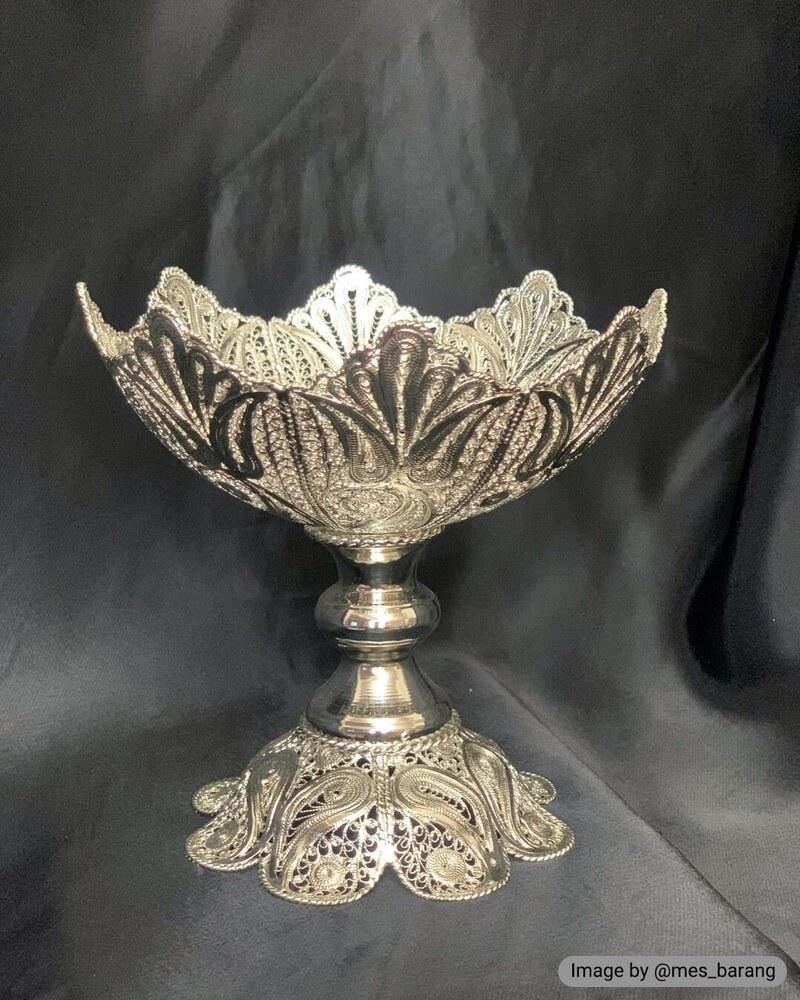
Typically, the primary material used by most filigree work artists is silver metal. Filigree metal is obtained by melting silver coins or scraps of silver dishes.
The silver used must be 100 karat. However, lower grade silver metal is used to make the handle or base of the dishes, which need to be firm.
Copper Filigree Work
The dishes that are made with copper metal using this handicraft art are very popular. Due to the fact that this metal is cheaper than silver and gold, more people are very interested in using copper filigree work products.
Filigree Work in Jewelry Making
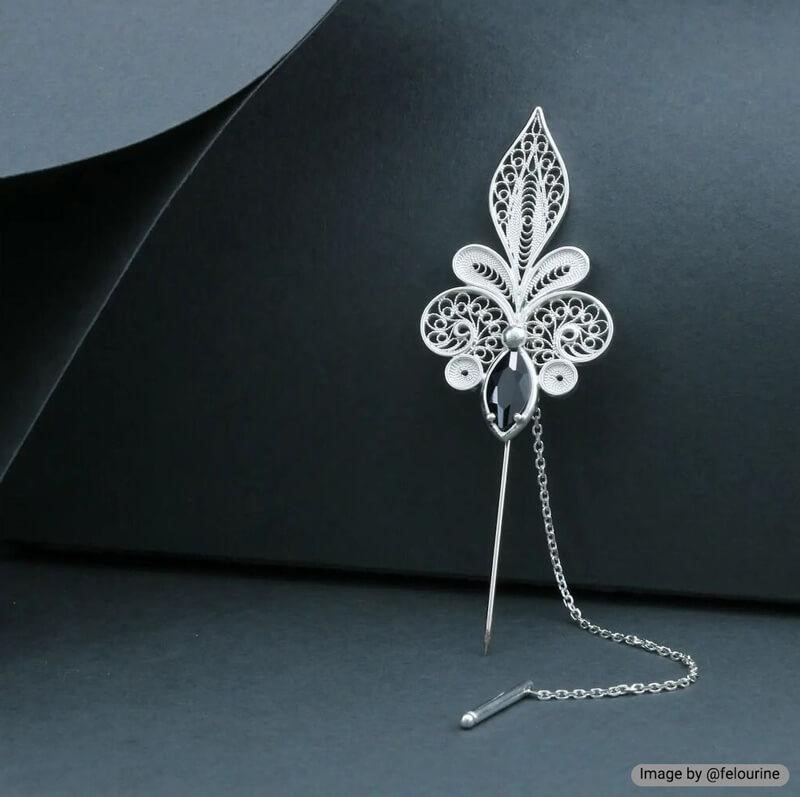
Filigree art in Iran is used in the production gold and various jewels, which makes them fare more attractive. Among these jewelry, we can mention rings, pins, chains and plaques.
Which Iranian Cities Are Famous for Filigree Work?
This art is one of the main handicrafts of cities such as Isfahan, Zanjan and Tabriz. Below we describe the unique characteristics of filigree handicrafts in these cities and explain the difference between Isfahan and Zanjan filigree work:
Zanjan Filigree Work
The city of Zanjan is one of the cities active in many fields of handicrafts, is known as the ” filigree work capital” in Iran. In addition to cultivating successful filigree work artists, this city has exported filigree art to other cities such as Isfahan and Tabriz.
Most of the handicraft products made in Zanjan are made with silver metal that feature arabesque and geometric designs. Among these products, we can mention tea sets, cookie jars, vases, candlesticks, photo frames, all kinds of jewlery, etc.
Isfahan Filigree Work
There are many filigree workshops in Isfahan that produce high-quality dishware. This is because the silver used in these workshops is plated. Also, a type of polyester is used to coat the products, which improves their appearance.
Ardabil Filigree Work
The city of Ardabil has a ancient history of developing many handicrafts and introduced them to other communities. Ardabil filigree art is considered one of the prominent handicrafts of this city, and there are many fine examples of it in the Ardabil Zargaran Bazaar and Ardabil Handicrafts Museum. Nowadays, this handicraft is more common in jewelry making than in dishware.
The Difference Between Isfahan and Zanjan Filigree Work
In the art of filigree work in Iran, the karat of the used silver and the micro-patterns in the products make all the difference. In this case, the karat of the silver used in Isfahan is around 90 to 95 and in Zanjan it is 99.9, which is called 100 karat.
In terms of design patterns, Isfahan filigree features larger patterns than Zanjan. In fact, Zanjan filigree dishes are more delicate and elegant and have higher build quality.
Filigree Work at Home (Self Employment)
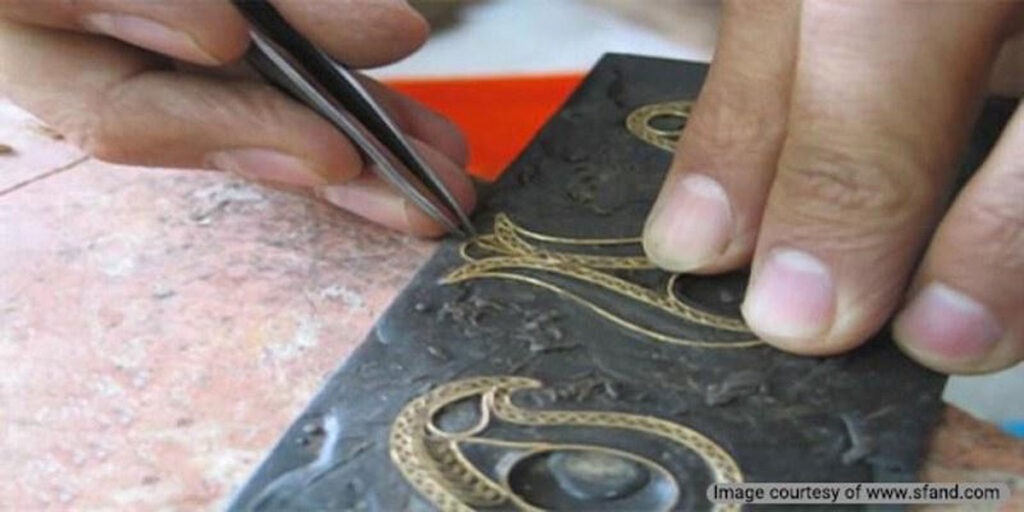
This field of handicrafts is one of the jobs that can be learned online or in-person. After learning this profession, anyone interested can make different dishware and products at home and earn money by selling them online, or at shops.
filigree work in Iran, a Traditional Iranian Handicraft
Iranian handicrafts have always attracted many tourists by presenting beautiful and diverse products. Destination Iran suggests that you get to know the best examples of this handicraft art when you travel to Isfahan and Zanjan.






